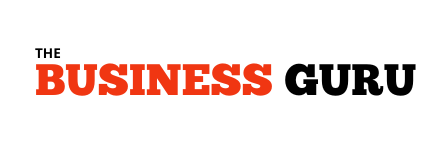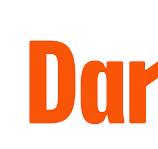SaaS should ensure an accurate cash flow forecast by regularly monitoring their spending and revenue patterns. If there are any irregularities, they can take corrective actions to ensure that their forecast is as accurate as possible. Additionally, they should also have a good understanding of their customer payment cycles so that they can predict when cash inflows will be coming in.
What is the best way for SaaS to set up its accounting system?
The accounting process for a software as a service company should include configuring an Oracle reporting table that contains customer revenue generated by the month. This reporting table will be used in conjunction with standard ledger entries to generate reports on all of the transactions for each month. Each transaction must have its own account code so that it can be tracked more accurately. Ideally, this process would enable the business’s financials to be generated automatically so they are readily available when needed.
What is the license turnover rate?
License turnover rate is defined as total licensor revenue divided by average number of licenses over a designated time period, which typically equals 12 months or 52 weeks. marginal cost?
What is the difference between logarithmic and linear growth?
Logarithmic growth is when one unit of increase in some quantity causes more than one unit of increase in the resulting value, while linear growth is when each additional unit increases the result by a fixed amount. For example, if SaaS has $1 million in revenue at the end of year one and $1.4 million in year two, that would be considered logarithmic because it grew by 40%. If SaaS had $2 million in revenue at the end of year one and $3 million at the end of year two, that would be considered linear because each additional dollar added $1 million to its total sales.
What is the difference between incremental and replacement costs?
The incremental cost is the additional cost of producing one more unit of a good, while replacement cost is what it would take to replace or rebuild an existing asset. For example, if SaaS purchases a new piece of equipment for $50,000 and it requires another $5,000 in labor and shipping costs, that would be considered incremental because those expenses were incurred as a result of buying the equipment. If SaaS’ server broke and needed to be replaced at a cost of $10,000, that would be considered replacement because the old server was already paid off and the business has no outstanding debt associated with it.
Incremental costs are the costs associated with producing one additional unit of a product or service, while marginal costs are associated with making one additional unit in total. For example, if SaaS has $0 in sales at the end of year one and $400,000 in sales at the end of year two, that would be considered incremental because it grew by $400,000. If SaaS has $1 million in sales at the end of one year and $1.4 million at the end of another, that would be considered marginal because each additional dollar added $400,000 to its total sales.
What is negative revenue growth?
Negative revenue growth is when total sales go down over one or more periods.
What is the difference between positive and negative growth?
Positive growth is when sales increase, while negative growth is when sales decrease over time. For example, if SaaS has $500,000 in revenue at the end of year one and $440,000 at the end of year two, that would be considered positive because it grew by -10%. If SaaS had $100 million in revenue at the end of year one and $80 million at the end of year two, that would be considered negative because its total sales are decreasing.
What are capital costs?
Capital costs are expenses for things with a useful life beyond 1 accounting period which may include buildings, equipment, machinery, vehicles, furniture, fixtures etc.
What are operating costs?
Operating costs are expenses for goods or services that benefit multiple accounting periods- they include only labour and materials directly connected with the production or delivery of products. Operating costs do NOT include indirect overhead items such as depreciation, rent, utilities et al. This is in contrast to capital expenditures. For example, if SaaS purchased a new server for $80,000 and it required another $10,000 in labour and shipping costs associated with the initial purchase price of the equipment over its useful life of 3 years, that would be considered an operating cost because it has an immediate impact on revenue generation while affecting future accounting periods through lower earnings before interest and taxes (EBIT).
What is EBIT?
EBIT refers to earnings before interest and taxes are deducted. It represents the measure of the profitability of a company – net income and fewer interest expenses. This term can be used in financial statements, balance sheets, budgets, etc.
What are amortization costs?
Amortization costs are expenses that involve paying down or writing off loans or assets over time. Examples include debentures (bonds), royalty payments for patents/copyrights et al
Why do companies report on IRR?
IRR (internal rate of return) measures the current performance of an investment against its cost by determining the interest rate which equates both amounts to zero; it determines what annual percentage return was earned from security based on its total return, cost, and time to maturity.
What is the difference between an investment and an expense?
Investments are considered assets that have future economic benefits whereas expenses are current or one-time costs that provide no future economic benefit. For example, if SaaS purchases a new server for $80,000 which will be used for 3 years before being replaced with a newer version, that would be considered an investment because it has a useful life of at least 1 accounting period and may bring in additional revenue once SaaS’ old server needs to be replaced. If SaaS buys a new copy machine for $30,000 which has been fully depreciated within five years, that would be considered an expense because it does not have a useful life beyond the current accounting period and will not increase revenue.
What is depreciation?
Depreciation refers to the expense of the cost of capital assets over their expected useful lives. It can be calculated by determining how much asset costs, subtracting any salvage value, and dividing it by the number of years the asset has left to be used- this percentage determines how many accounting periods are needed in order to fully depreciate a particular item based on its original purchase price. For example, if SaaS purchases a new server for $80,000 which has a 5 year useful life before being replaced, that would be considered an operating cost because depreciation expenses would begin in the first year of the server’s life and continue over the course of its useful life.
What is SALES?
Sales refer to net sales or revenues which are the total amount of revenue generated by a company through selling its goods or services, less returns and allowances (e.g., discounts for prompt payment). Sales can be found in income statements.
What is COGS?
COGS (costs of goods sold) refer to expenses associated with producing/procuring goods that are offered for sale- it refers to direct materials, direct labor, variable overhead costs et al; these costs are determined based on production activity during specific periods. COGS can be found in income statements. Net sales fewer COGS equals a company’s gross margin.
What is gross margin?
Gross margin refers to net sales fewer COGS which represents a company’s total income generated from selling its goods or services- it can be used as a way of measuring the profitability of the sale of products and services before taking into account expenses, interest et al associated with running a business. Gross margins can be found in income statements.
What is EBITDA?
EBITDA stands for earnings before interest, taxes, depreciation, and amortization – it is used as an indicator of operational performance that factors out items such as financing costs and tax liabilities which do not reflect day-to-day activities and instead provide relevant information about how well a company is performing. EBITDA is used as a surrogate for cash flow and it can be found in income statements.
What is NET INCOME?
Net income refers to the earnings attributable to shareholders and is included on the income statement after taking into account revenues, expenses et al; it can also be known as net profit or a net loss. Net income can be found in income statements.
What is CASH FLOW from OPERATIONS?
Cash flow from operations (CFO) refers to the total amount of cash generated by operating activities including sales and costs associated with running a company over a specific time period; companies must report this information quarterly –k-cash flow from operations can be found in cash flow statements.
What is INVENTORY?
Inventory refers to the value of products, materials, and supplies which are held for sale in the normal course of business- it can be found on a company’s balance sheet.
What are ACCOUNTS PAYABLE?
Accounts payable refer to amounts owed to suppliers or service providers as well as wages, salaries et al owed to employees – it can be found on a company’s balance sheet. Accounts payable represents the number of goods or services that have been received by but not yet paid for by SaaS.
What are ACCRUED EXPENSES?
Accrued expenses refer to expenses that have already happened at the time they are reported in an income statement; they represent expenses that have been incurred but not yet paid.
What is REVENUE?
Revenue refers to the total amount of money generated by sales which can be found on an income statement.
What is CASH FLOW STATEMENT?
A cash flow statement (CFS) provides information about how much cash a company has brought in and spent over a specific time period; it also provides insight into the reasons why there was a difference between net profit and cash inflow- cash flow statements show three categories: operating activities, investment activities, and financing activities.
Operating activities refer to revenues and expenses related primarily to the day-to-day running of the company. Investment activities refer to buying or selling of non-current assets as well as adjusting the value of those assets. Financing activities refer to cash flows related to changes in a company’s long-term liabilities and shareholder’s equity accounts.
What are TOTAL LIABILITIES?
Total liabilities refer to the amount a SaaS owes its creditors, including bondholders, lenders et al – it can be found on a company’s balance sheet.
What is SHAREHOLDERS EQUITY?
Shareholders equity is also known as stockholders’ equity is the claim of all creditors and owners on a company’s assets after accounting for all debts – it can be found on a company’s balance sheet.
What is NET DEBT?
Net debt refers to the amount of money a company owes after taking into account cash, short-term investments et al – it can be found on a company’s balance sheet.
What are EQUITY SHARES?
Equity shares refer to shares that have been issued by a business corporation to its shareholders- they are another term for stocks.
What is CURRENT LIABILITY?
Current liability refers to all amounts owed by SaaS which must be paid within one year or operating cycle – it can be found on a company’s balance sheet.
What is LONG TERM LIABILITY?
Long-term liabilities refer to all amounts owed by SaaS which will be paid beyond one year or the operating cycle- it can be found on a company’s balance sheet.
What is PREFERRED STOCK?
Preferred stocks refer to own shares in a corporation that has certain benefits over common stock- they are another term for preferred stock. Preferred shareholders receive dividends before common shareholders and have priority when it comes to the assets of a company in the event of liquidation.
What is COMMON STOCK?
Common shares refer to shares issued by a business corporation to its general public – they are another term for common stock. Common shareholders do not receive dividends unless declared or earned after dividends for preferred shareholders have been paid out. Common shareholders do not always have voting rights, depending on the type of share, and may only vote on issues such as approving major transactions or increasing the number of authorized shares.
What is TOTAL CAPITAL?
Total capital refers to funds contributed by shareholders and debt holders directly into a business – it can be found on a company’s balance sheet.
What is CASH FLOW INFLOW?
Cash flow inflow refers to money that has recently been invested in the company; this term also includes money that has been borrowed by the company- cash flows here include items such as proceeds from issuing bonds, loans etc. Cash outflows refer to money spent by SaaS which may include spending on fixed assets, inventory et al – cash flows here can also include items such as interest payments, principal repayments, and dividends that were paid out.
What is FREE CASH FLOW?
Free cash flow refers to the amount of money a company has left after paying for investments such as fixed assets et al- it can be found on a company’s balance sheet.
What is NET INCOME PROFIT?
Net income contains either retained earnings or losses from previous years while profit reflects the current year’s net income – these terms are used interchangeably in practice. Net income shows what part of a business’s revenue remains, after all, operating expenses, interest and taxes have been paid – it can be found on a company’s income statement.
What is pick-list discounting?
Pick-list discounting is a discounting model in which a facility collects payments from one or more customers via invoices, with each invoice being accompanied by a single-use token.
What is BOARD MEMBER?
A board member refers to an individual who has been appointed with the task of overseeing the activities of an organization or company – they are normally appointed for terms that last between three and five years. They provide advice on the overall direction of policy to be followed within their respective fields.
What are STATEMENTS OF CASH FLOW?
Statements of cash flow are accounting reports that show where the cash came from and how it was spent during a specific period. Cash is king, especially when it comes to SaaS.
What is BOOK VALUE?
Book value refers to the original value of an asset according to the company that holds it; alternatively, it can also be referred to as its carrying value. Book values usually do not fluctuate greatly and only change when SaaS buys or sells equipment or property at fair market value.
What is NET ASSET VALUE?
Net asset value refers to the total assets minus liabilities of a business – it can be found on a company’s balance sheet. This figure may also be referred to as shareholders’ equity, which shows what portion of the company belongs to all common shareholders.
Conclusion
In a nutshell, common stock refers to shares issued by a business corporation to its general public and they come with fewer rights than preferred shareholders. Total capital is the sum of funds contributed by shareholders and debt holders directly into a business, while cash flow inflow includes money that has recently been invested in or borrowed by the company.
Free cash flow is the amount of money a company has left after paying for investments such as fixed assets, and net income profit is what’s left over after all operating expenses, interest and taxes have been paid. Statements of cash flow show where the cash came from and how it was spent during a specific period, while book value is the original value of an asset according to the company that holds it.





